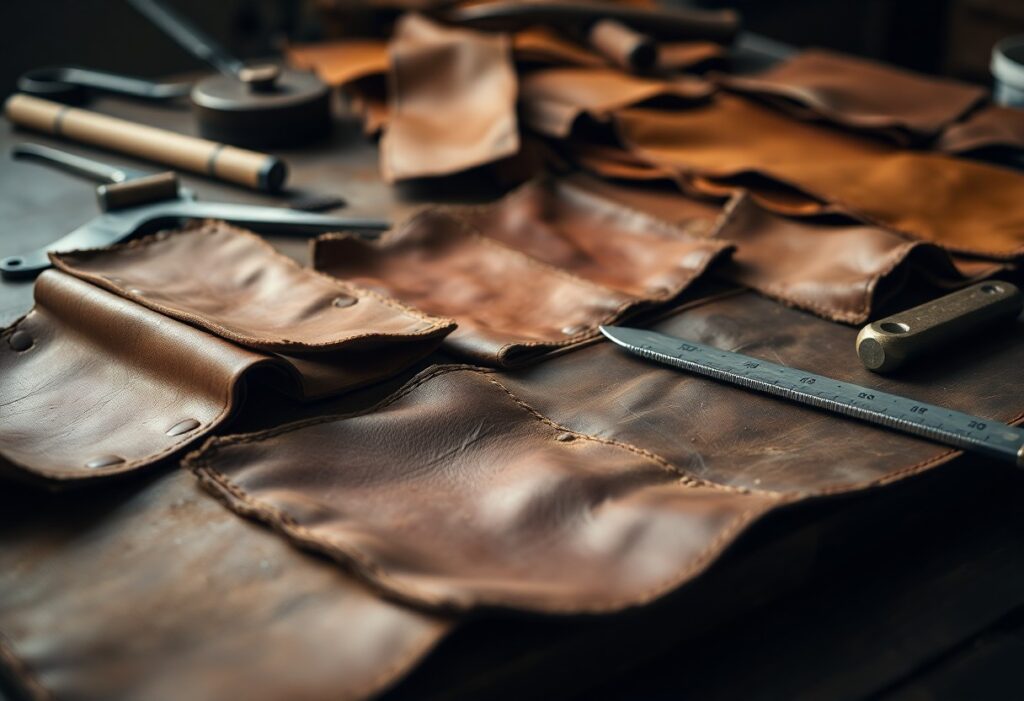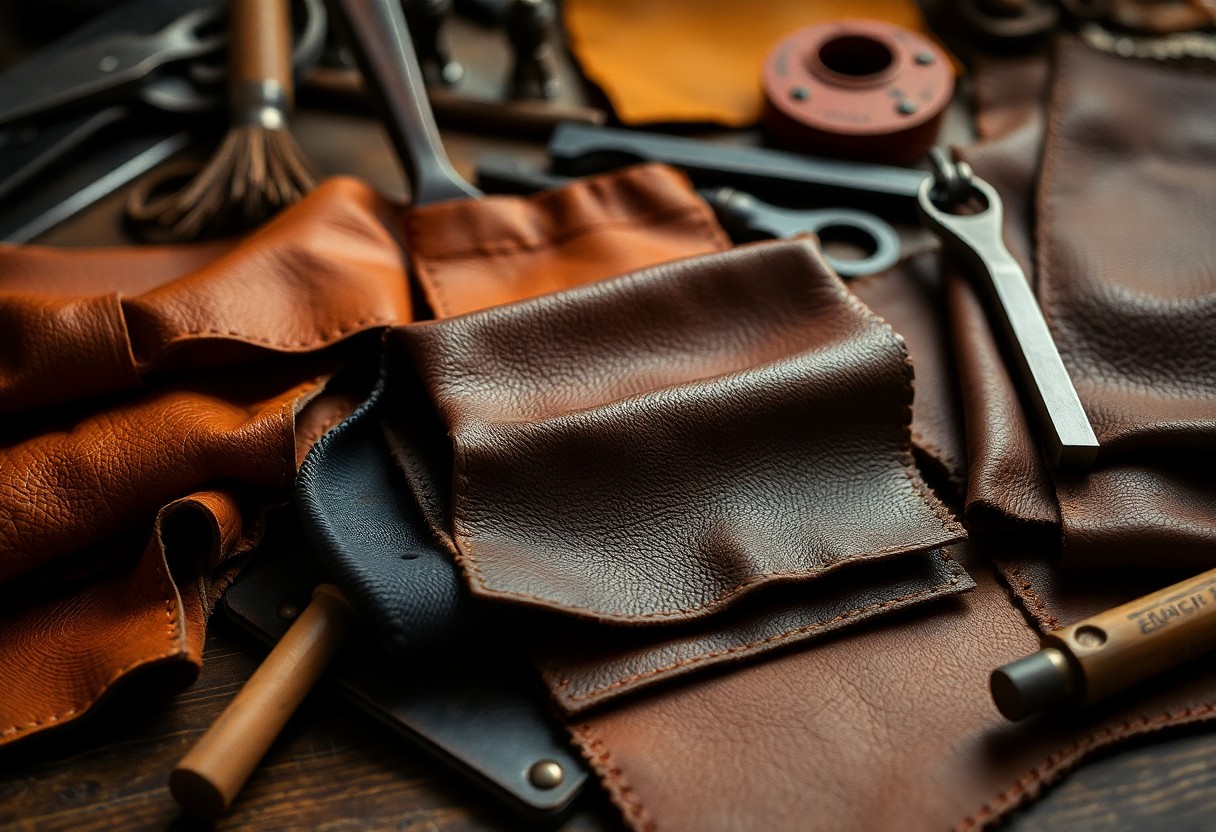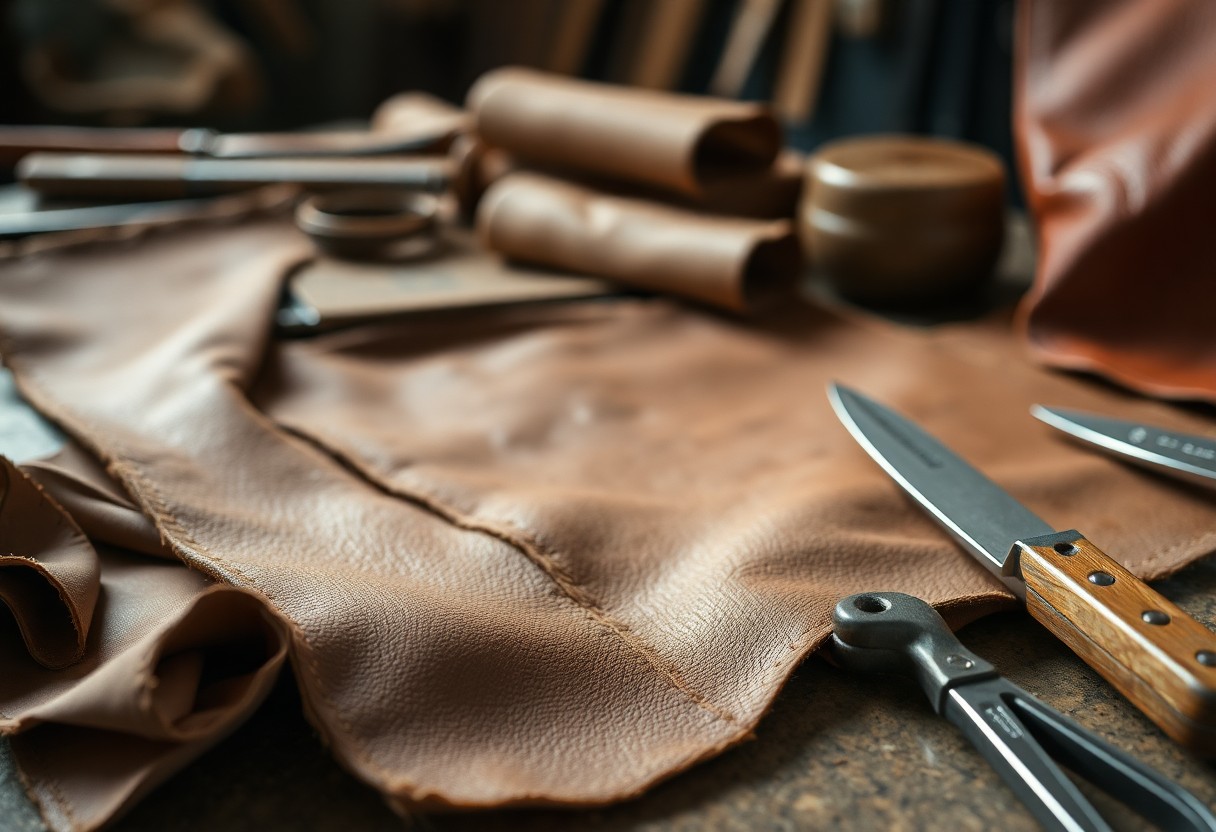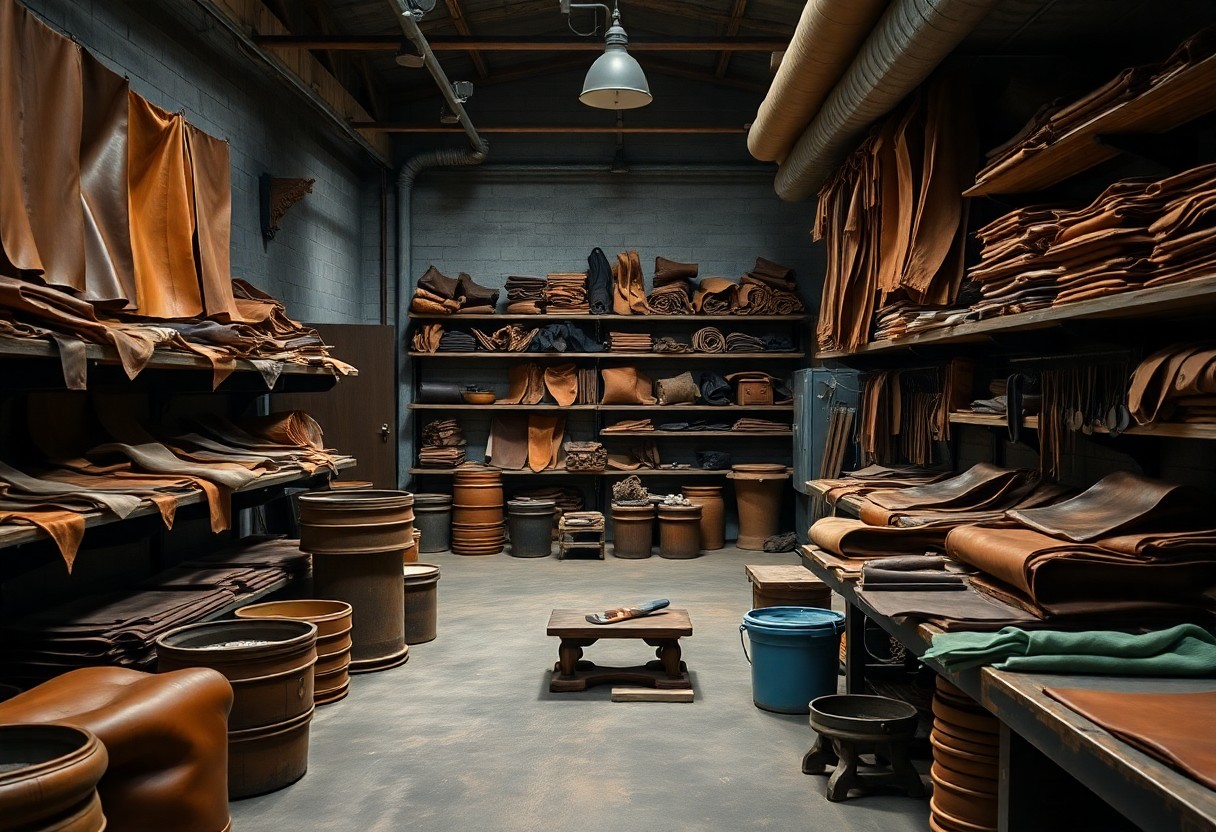
The transformation of leather tanning techniques over the years has resulted in a sophisticated process that profoundly influences the quality of leather products. Different tanning methods produce distinct characteristics in leather, affecting essential features such as durability, water resistance, texture, and color stability. The tanning journey begins with raw hides and progresses through several vital stages, which may comprise chrome tanning, vegetable tanning, and chrome-free methods. Each technique uniquely alters the leather’s properties, subsequently impacting its usability, maintenance, and overall aesthetic appeal. A comprehensive grasp of these processes empowers consumers to make knowledgeable choices regarding leather quality, while also considering the environmental implications, as some methods are significantly more sustainable than others.
Discover the Different Techniques of Leather Tanning
In the realm of leather production, a diverse array of tanning methods is utilized to convert raw hides into practical and aesthetically pleasing leather. The primary techniques include chrome tanning, vegetable tanning, and chrome-free tanning. This extensive guide aims to clarify the nuances of each method, equipping you with the necessary knowledge to select the one that aligns best with your leather requirements and preferences.
| Method | Characteristics |
| Chrome Tanning | Fast processing, excellent water resistance, accounts for 85% of global leather production |
| Vegetable Tanning | Natural and eco-friendly, represents 10% of production |
| Chrome-free Tanning | Environmentally safe, comprises 5% of production |
| Combination Tanning | Integrates multiple methods for distinct properties |
| Aldehyde Tanning | Specialized technique tailored for certain applications |
Gain Insights into the Chrome Tanning Procedure
The chrome tanning method utilizes chromium (III) salts to create leather that is soft, flexible, and highly sought after for various applications. This process results in leather that not only exhibits water resistance but also readily absorbs dyes, making it a preferred choice within the industry. Notably, the efficiency of chrome tanning is impressive; it typically completes within a swift timeframe of 24 to 48 hours, which is particularly advantageous for mass production needs.
Explore the Craft of Vegetable Tanning
As one of the oldest and most traditional methods, vegetable tanning employs natural tannins derived from materials such as tree bark and leaves. This approach is celebrated for its capability to produce leather that ages gracefully, developing a rich patina over time while remaining biodegradable. Various types of vegetable tanning, such as those utilizing extracts from oak bark, chestnut, and mimosa, contribute to the individual characteristics of the finished product. Anticipate this meticulous process to take approximately 4 to 6 weeks, yielding leather that is generally firmer and more structured compared to its chrome-tanned counterpart.

In-Depth Overview of the Leather Tanning Process
Transforming raw hides into high-quality finished leather involves a systematic and organized approach. Below, you will find a detailed examination of each crucial step and its significance in achieving the desired quality of leather.
Pre-tanning Operations Crucial for Quality Assurance
To guarantee optimal leather quality, raw hides undergo a series of meticulous preparation steps. This preliminary phase includes soaking the hides in clean water for 24 to 48 hours to remove salt and dirt, followed by a liming process to effectively eliminate hair and fats. It is essential to maintain precise pH levels throughout this phase to protect the integrity of the hides and avoid any potential damage.
Key Steps in the Core Tanning Process
The pretanning phase initiates with deliming and pickling to prepare the hides for the primary tanning agents. The most widely utilized method is chrome tanning, which employs chromium sulfate and can yield leather in as little as 24 hours. Conversely, vegetable tanning relies on natural tannins and extends the process to approximately 20 to 60 days.
A pivotal aspect of the tanning process is temperature regulation. Chrome tanning typically operates at temperatures ranging from 35 to 40°C, while vegetable tanning occurs at lower temperatures of 20 to 25°C. Continuous monitoring of pH levels is crucial to prevent damage to the leather and to ensure optimal absorption of the tanning agents.
Advanced Leather Treatment Techniques for Superior Quality
A wide variety of techniques are available to enhance the characteristics of your leather. From surface finishing to deep-penetration treatments, each method serves a distinct purpose. With the appropriate treatment, you can extend your leather’s lifespan by up to 50% and significantly enhance its resistance to water, heat, and wear.
Investigating Various Surface Treatments
Surface treatments for leather may include waxing, buffing, and protective coatings. These techniques can enhance water resistance by up to 70% and allow for customization between a shiny or matte finish according to personal preference. Furthermore, surface treatments play a vital role in safeguarding leather against UV damage and the rigors of everyday use.
Dyeing Techniques for Vibrancy and Longevity
Your leather can absorb various types of dyes at differing depths. Aniline dyeing, for instance, penetrates deeply into the leather, while surface dyeing offers more controlled color application. The dyeing process you choose will have a significant impact on both the aesthetic appeal and durability of the leather.
Moreover, the dyeing method selected greatly affects the final characteristics of the leather. Drum dyeing can achieve up to 95% color penetration, while spray dyeing provides improved precision in color control. It is worth noting that natural dyes are more eco-friendly but may fade approximately 20% faster than their synthetic counterparts.

Essential Quality Factors in Leather Processing
The quality of leather is shaped by a multitude of interconnected factors throughout the processing stages. Recognizing these elements is vital for achieving outstanding results in leather selection and preservation. The chosen tanning method, quality of hides, and processing parameters are all crucial in determining the leather’s final attributes. By mastering these factors, you can more effectively evaluate leather quality based on your specific needs and preferences.
Selecting Raw Materials for Optimal Leather Quality
When choosing raw materials, it is imperative to pay close attention to the condition of the hides and the source of the animals. The quality of your raw materials directly influences the properties of the final leather product. The best hides typically come from healthy animals and exhibit minimal surface imperfections. It is important to look for consistent thickness and absence of parasitic damage. Selecting materials should be based on their intended application, as different uses necessitate specific hide characteristics.
Critical Processing Parameters for Quality Assurance
There is a clear correlation between processing controls and the overall quality of leather. Maintaining strict oversight of pH levels, temperature, and chemical concentrations is essential. The duration of tanning usually lasts from 24 to 48 hours, with temperature controls kept between 35 to 40°C. Your careful attention to these parameters ensures that the leather quality remains consistent throughout the entire process.
This meticulous attention to detail should be applied at every stage of processing. Monitoring moisture content (ideally 45-55%), maintaining appropriate drum speed during tanning, and ensuring accurate chemical dosing are all critical factors. Moreover, the drying conditions must be managed with care to prevent damage to the leather. A thorough focus on these parameters culminates in superior finished leather quality.
Expert Strategies for Achieving Superior Leather Treatment Outcomes
Not every leather treatment process yields equally high-quality results. It is crucial to emphasize temperature control, chemical balance, and timing accuracy throughout the tanning process.
- Regularly check pH levels
- Maintain stable temperature
- Follow precise chemical ratios
- Document each step thoroughly
Being vigilant about indicators of proper tanning can empower you to achieve top-quality finished leather.
Techniques for Optimizing the Tanning Process
To secure the most favorable outcomes, controlling your tanning environment is essential. Keep your workspace at temperatures ranging from 20 to 25°C and maintain humidity levels between 45-55%. Ensure that your chemical solutions are fresh and precisely measured. Regular maintenance of your equipment is vital for achieving consistent results.
Upkeeping Quality Standards in Leather Care
The quality of leather is highly dependent on your storage conditions and handling practices. Store your leather in a dry, cool environment away from direct sunlight to maintain its integrity. Regularly check moisture levels and rotate your stock every 30 days to ensure freshness.
Monitoring the treatment process is critical for maintaining quality standards. Your routine inspections should include pH testing, physical assessments, and moisture content evaluations. Document all observations meticulously and adjust your procedures based on the findings. Consistent quality control enables you to identify and address potential issues before they adversely impact your final product.

Assessing the Advantages and Disadvantages of Various Tanning Techniques
To develop a comprehensive understanding of leather tanning, it is essential to weigh the various methods based on their pros and cons. Below is a thorough comparison of the primary tanning techniques:
| Pros | Cons |
|---|---|
| Chrome tanning: Rapid processing, cost-efficient | Chrome tanning: Environmental concerns, potential waste disposal issues |
| Vegetable tanning: Eco-friendly, derived from natural resources | Vegetable tanning: Lengthy process, requires more water |
| Chrome-free tanning: Environmentally safe, produces good quality leather | Chrome-free tanning: Complex methodology, higher costs involved |
| Combination tanning: Provides versatile leather properties | Combination tanning: Difficulties in maintaining quality control |
Financial Considerations of Leather Tanning Decisions
Choices made regarding leather tanning methods can significantly influence your production costs. Chrome tanning boasts 85% cost efficiency compared to vegetable tanning, while chrome-free processes often result in increased expenses by 20-30%.
Influence of Tanning Techniques on Leather Quality
The quality of even the finest leather can be seriously compromised by inappropriate tanning choices. The tanning method you select directly affects essential attributes such as durability, water resistance, and texture.
For example, leather processed through chrome tanning demonstrates superior water resistance and flexibility, while leather treated with vegetable methods is known for its better aging properties and the development of a unique patina over time.
Insights on Leather Tanning and Treatment Practices
From the information covered, it is clear that various leather tanning and treatment methods have profound effects on the quality and characteristics of your leather. The decision to use chrome, chrome-free, or vegetable tanning will significantly influence aspects such as durability, texture, and environmental impact. Additionally, the dyeing technique you choose—whether it be aniline or crust—will determine your leather’s color depth and aging behavior. Finally, the type of finishing applied—such as full grain, corrected grain, or top-coated—will establish standards for appearance, breathability, and maintenance demands. Acquiring a thorough understanding of these processes enables you to make informed decisions regarding your leather purchases and care practices.
Your Queries Addressed: Leather Tanning FAQs
Q: What are the main differences between chrome tanning and vegetable tanning?
A: Chrome tanning employs chromium salts, resulting in soft, water-resistant leather that is processed swiftly and cost-effectively, accounting for 85% of global leather production. In contrast, vegetable tanning uses natural tannins from tree bark and leaves, requiring a longer processing time but producing leather that develops character with age. While vegetable-tanned leather is more environmentally friendly in terms of disposal, it is also more susceptible to staining compared to chrome-tanned varieties.
Q: How does aniline dyeing affect the quality and appearance of leather?
A: Aniline dyeing involves immersing leather in dye baths that deeply penetrate the material, resulting in uniform color throughout the leather and excellent color retention. Contemporary aniline-dyed leather is often dyed partially rather than completely, preserving a lighter interior layer. This technique enhances the leather’s stability while ensuring a rich color depth on the surface.
Q: What differentiates full grain leather from corrected grain leather?
A: Full grain leather retains its natural surface without sanding or artificial overlays, showcasing natural pores and the strongest fiber structure, with the ability to be restored if scuffed. In contrast, corrected grain leather undergoes sanding and is covered with a plastic layer, making it easier to clean and maintain, though it may lack breathability and could crack over time without any means of repair.
The Article Guide to leather tanning and treatment methods processes types and their impact on quality appeared first on My Shoes Finder
The Article Leather Tanning: Methods, Processes, and Quality Impact Guide Was Found On https://limitsofstrategy.com
Comments
7 responses to “Leather Tanning Methods and Their Impact on Quality”
It’s fascinating to dive deeper into the intricate world of leather tanning, especially considering how these processes can really dictate not just the feel and look of leather but also its longevity and sustainability. I’ve always been drawn to artisanal leather goods because they tend to tell a story—how they were made, the materials used, and ultimately, who made them. Testing out different products, like a vegetable-tanned wallet versus chrome-tanned belts, has highlighted these nuances for me personally.
Your insights into the evolution of leather tanning techniques are captivating! It’s fascinating to consider how these methodologies not only enhance the leather’s quality but also its environmental footprint. Personally, I’ve always had a soft spot for vegetable-tanned leather due to its rustic appeal and the fact that it often ages beautifully, developing a rich patina over time. The connection to nature and sustainability really resonates with me, especially as more consumers are becoming environmentally conscious.
I appreciate your perspective on vegetable-tanned leather—it really does have a unique charm that seems to connect us back to nature in a way that other methods don’t. The way it develops a rich patina over time is almost like a visual diary of its journey, reflecting not just the wear and tear but also the love and care given to it. It’s interesting to think about how leather can evolve with us, telling our story alongside its own.
Speaking of enhancing quality and sustainability, I recently came across a handy checklist for picking up rental cars that could really streamline the process while being mindful of the details.
‘Essential Inspection Checklist for Rental Car Pickup’
https://forgottenportal.com/essential-inspection-checklist-for-rental-car-pickup/.
You’ve captured something truly special about vegetable-tanned leather. It’s not just about its aesthetic appeal; there’s an authentic connection to craftsmanship and nature that many synthetic alternatives just can’t match. The way it develops a unique patina over time really tells a personal story, doesn’t it? Each scratch and mark can spark memories of moments spent with that piece, whether it’s a wallet, bag, or even a pair of shoes. It’s fascinating how materials can mirror our own journeys.
Your insights into the evolution of leather tanning techniques illuminate a complex interplay between craftsmanship and environmental consciousness that is increasingly relevant today. It’s fascinating to consider how traditional methods, like vegetable tanning, not only emphasize sustainability but also impart a unique character to the leather that can’t be replicated through synthetic processes. The way you described the intricacies involved in this transformation—especially the balance of durability and aesthetics—prompted me to reflect on my own experiences with leather goods.
Your exploration of leather tanning techniques sheds light on an often-overlooked aspect of craftsmanship and sustainability. As someone who has worked with leather artisans, I’ve witnessed firsthand how the choice of tanning method can significantly affect not just the product’s aesthetic but also its longevity and ethical implications.
This is a fascinating exploration of leather tanning techniques and their profound impact on product quality. I’ve always been intrigued by how the choice of tanning method can not only enhance the aesthetic appeal of leather but also influence its longevity and environmental footprint. For instance, vegetable tanning, while often taking longer, results in a more organic and sustainable product, which aligns well with eco-conscious consumer trends today.